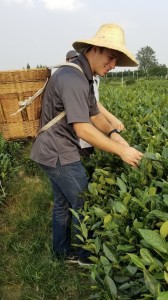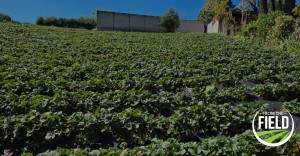Last June, I had the privilege of visiting parts of Asia to attend a conference hosted by one of our distributors. The event brought together ag experts, farmers, and researchers from different parts of the world to discuss the future of farming. I was excited to collaborate with them all and little did I know, this trip would give me a chance to witness the power of biostimulants in action and how they are helping growers transform crops like peppers, peanuts, and many more.
Asia has a rich agricultural heritage, and I’m constantly amazed by how Asian farmers are blending modern techniques with traditional practices, all while staying true to their roots. They know exactly what works for their land and are open to sharing their farming “secrets”, quite the opposite of what I’ve seen in other regions where farmers are more protective of their methods.
Even though I have been to the world’s largest continent many times before, this time was unique. One of our Asian distributors knew I wanted to explore the agricultural practices in the area, so he graciously offered to take me on a field trip.

I observed the results of biostimulant application firsthand, including Huma Jackpot® and Vitol® – two of our key biostimulant products, that are used in a variety of crops throughout the region. The distributor guided me through the fields, showing the noticeable differences between treated and untreated crops.
The first stop was a pepper field. As we walked through the fields, the contrast was immediately apparent. On the treated side, the peppers were vibrant, and the yield was noticeably higher. One farmer shared that, after using Jackpot, his yield had increased by 10-20%, and that’s when the numbers really hit home. The weight of similarly sized pepper slices increased by 28%. I was thrilled about these results and couldn’t wait to share them with my team at Huma. I was curious to know how he applied the product to achieve those results, and I learned Jackpot was applied just 2-3 weeks before harvest, and it helped plants translocate nutrients into the peppers more efficiently.
As we walked to the next sections of the farm, I saw similar positive outcomes with other crops: peanuts showed a 41% increase in yield, potatoes grew larger and weighed 27% more than untreated ones, and cherries gained an 8% increase in weight, and they tasted so amazing that I almost wanted to bring a bag full of cherries home—but maybe another time!
The farmers also shared that Vitol played an equally powerful role in the process as well. Applied early in the growing season, it proved to be especially beneficial in crops like garlic and wheat. The biostimulant properties of Vitol improved seed germination, plant vigor, and helped crops recover from stressors like frost and herbicide damage. While passing by a garlic field, I could see the robust garlic shoots standing tall in the field—a clear testament to Vitol’s effectiveness. In corn, Vitol was mixed with herbicides to improve the efficiency of herbicides, as well as providing the biostimulant strength to the corn.
It’s interesting the way these products supported crops throughout their entire lifecycle. From the moment the seeds were planted to the day of harvest, the biostimulant products worked in harmony to help each crop reach its full potential. These thriving crops served as an excellent testimony to biostimulants’ ability to enhance both the quality and yield of crops across the board, and that kind of boost is invaluable to any farmer and their bottom line.
By the end of the visit, I had no doubts that biostimulants have become an integral part of the Asian agricultural landscape, and my distributor friends and ag experts from various countries agreed! Whether it’s increasing yield, improving crop quality, or helping plants recover from stress, biostimulants are proving to be essential tools for farmers striving to excel in terms of soil health, crop quality, profitability, and long-term sustainability.
Looking back on the lush green fields I visited, the people I met, and the conversations we’ve had, I feel that this experience was more than just a business trip, it was a chance to see the difference that science and innovation can make in agriculture. With biostimulant products we’re not just improving crops, we’re changing the way we grow them. One crop at a time!
Related Posts

From the Field: Huma® Improves Soil Health and Strawberries in Guatemala
In the highlands of Guatemala, near the capital, is a small stronghold for berries. Strawberry production in Guatemala covers about 3,000 hectares in total, yet it yields nearly 14,000 tons of fresh strawberries annually, with 7,000 tons exported to neighboring countries. During my previous visits to Guatemala, I often passed by local strawberry farms, which

From the Field: Journey of the Perfect Valentine’s Day Rose
Centuries before Saint Valentine was marrying couples in ancient Rome, legend says the red rose sprouted from the ground, watered by Aphrodite’s tears and her lover Adonis’ blood. Throughout the ages, the quintessential red rose has been a symbol of love, but have you wondered where it comes from? Most rose production is centralized in

From the Field: Why I Switched to MICROHUMIC® OM for Seed Lubrication
As a farmer and ag salesman at Huma, I’m always on the lookout for products that can make farming easier and more efficient. That’s how I first came across MICROHUMIC® OM at the 2024 Commodity Classic, right after I joined Huma. While working in our booth, I was chatting with our CEO, Lyndon Smith, when

